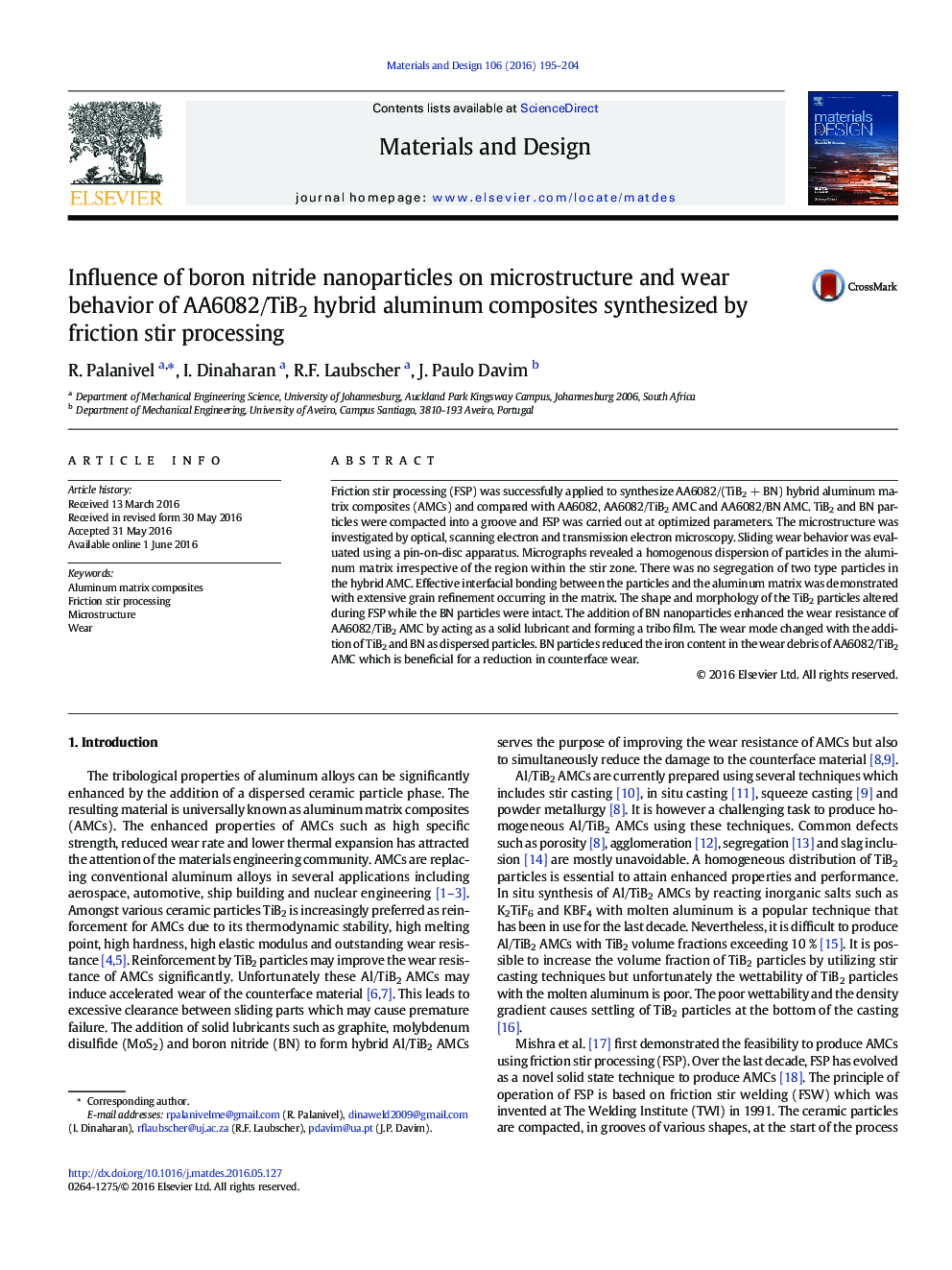| Article ID | Journal | Published Year | Pages | File Type |
|---|---|---|---|---|
| 827880 | Materials & Design | 2016 | 10 Pages |
•Friction stir processing was used to produce AA6082/TiB2 + BN hybrid composite.•Effect of BN nanoparticles was investigated.•Uniform dispersion of TiB2 and BN particles without segregation•TiB2 and BN particles refined the grains of aluminum matrix.•BN reduced the iron content of wear debris safeguarding counterface.
Friction stir processing (FSP) was successfully applied to synthesize AA6082/(TiB2 + BN) hybrid aluminum matrix composites (AMCs) and compared with AA6082, AA6082/TiB2 AMC and AA6082/BN AMC. TiB2 and BN particles were compacted into a groove and FSP was carried out at optimized parameters. The microstructure was investigated by optical, scanning electron and transmission electron microscopy. Sliding wear behavior was evaluated using a pin-on-disc apparatus. Micrographs revealed a homogenous dispersion of particles in the aluminum matrix irrespective of the region within the stir zone. There was no segregation of two type particles in the hybrid AMC. Effective interfacial bonding between the particles and the aluminum matrix was demonstrated with extensive grain refinement occurring in the matrix. The shape and morphology of the TiB2 particles altered during FSP while the BN particles were intact. The addition of BN nanoparticles enhanced the wear resistance of AA6082/TiB2 AMC by acting as a solid lubricant and forming a tribo film. The wear mode changed with the addition of TiB2 and BN as dispersed particles. BN particles reduced the iron content in the wear debris of AA6082/TiB2 AMC which is beneficial for a reduction in counterface wear.
Graphical abstractFigure optionsDownload full-size imageDownload as PowerPoint slide
